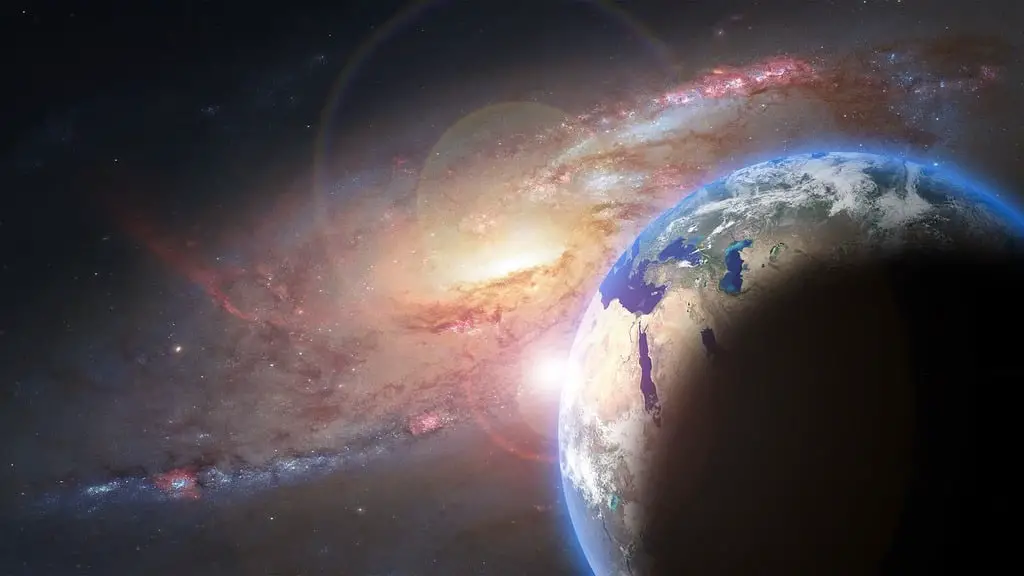We have a particular place in our hearts for the Earth, our cherished home planet. It’s a sanctuary where we find comfort, make friendships, and make memories—not just a physical location. The essence of Earth permeates every breath we take, every movement we take, and every minute we live.
Even though the Earth seems huge and unbounded to us, its size seems quite small when we consider its place in the enormous scheme of the observable cosmos. The realization that our lovely planet, with all of its beauties and complexities, is simply a small dot in the cosmic emptiness humbles us and emphasizes the vastness and breathtaking beauty of the cosmos that envelops us.
Earth’s Size in Perspective
Let’s start by exploring the amazing size of Earth, our home planet. With a circumference of almost 12,742 kilometers (7,918 miles), it is really astounding to think of how big our planet is. Imagine going on a cross-continental road trip from one end of the Earth to the other to put it into perspective. This incredible journey would take hundreds of hours and traverse innumerable locations, demonstrating the vastness and diversity of our globe.
But Earth gets smaller when we start comparing it to other celestial bodies. Let’s examine Jupiter, the largest planet in our solar system, as an example. It is a colossal planet, with a diameter greater than eleven times that of Earth. And as we turn to face the sun, we see that it is far larger than our meek planet, Earth—it is more than 100 times broader. These heavenly bodies’ immense size helps us understand our location in the expanse of the cosmos.
Our Solar System and the Milky Way Galaxy
Earth is located in our solar system, which is enormously large. Neptune is the planet that is officially the furthest from the Sun in our solar system; the distance between them is around 4.5 billion kilometers (2.8 billion miles). To put this into perspective, it takes light more than four hours to cover this enormous distance at the astounding speed of almost 300,000 kilometers per second. Thinking about the vastness of our heavenly neighborhood and the wonders that exist there is incredibly motivating.
Nevertheless, the Sun, planets, and other celestial things that make up our solar system are but a small portion of the enormous and captivating Milky Way galaxy. The Milky Way is a majestic spiral galaxy that is home to billions of stars, including our Sun, and has an estimated diameter of 100,000 light-years. The distance light travels in a year is called a light-year, and it is an incredibly large unit of measurement, measuring around 9.46 trillion kilometers (5.88 trillion miles). When we consider how big our galaxy is, it is even more astounding to realize how small Earth is in relation to the Milky Way’s cosmic scale.
The Observable Universe
However, we won’t stop there. It is time to set out on an amazing adventure into the observable universe, a cosmic domain that reaches far beyond our small planet Earth. We struggle to comprehend the mind-boggling concept as we attempt to comprehend the sheer vastness and grandeur of this breathtaking chasm. As of right now, estimations put the circumference of the observable universe at an astounding 93 billion light-years, a distance that is unimaginably large. We are in constant amazement of its immense size and magnificence, which satisfies our desire to learn more about the mysteries that exist outside the realm of our senses. We reveal a small portion of the enormous cosmic tapestry with each new finding, solving the puzzle of our existence and marveling at the wonders that lie ahead in this never-ending cosmic dance.
To even begin to imagine the vastness of the universe is simply mind-boggling. Imagine attempting to comprehend the vastness that surrounds you while standing on a tiny particle of dust in a vast cosmic ocean. Let us consider it in the context of a metaphorical analogy. Our world would be tiny in this concept, less than a single atom, if we were to reduce the size of the entire observable universe to that of Earth. This comparison draws attention to the universe’s immense expanse and the inconceivable disparity in size. It’s similar to being in awe at the brink of an unending chasm where our comprehension is continually tested. We are humbled and in awe of the mysteries that lay beyond because our thoughts are only able to capture a little portion of the magnificence that resides beyond our reach.
In summary
In conclusion, we frequently think of Earth as being very large while we go about our everyday lives. But when we take into account the size of the observable cosmos, Earth’s actual size becomes startlingly small. This insight, fundamentally humble, acts as a continual reminder of our little yet important role in the universe. We are but a small piece, a grain of dust, in a much broader and more expansive scheme of things. Viewed from this angle, our sense of wonder and amazement only grows, igniting our desire to learn more about the infinite mysteries that lay outside the borders of our heavenly home.
Sources
- NASA’s Earth Fact Sheet
- Universe Today: How Big is the Universe?
- Business Insider: Here’s what would happen if you shrunk the world’s biggest things down to size
![]()
